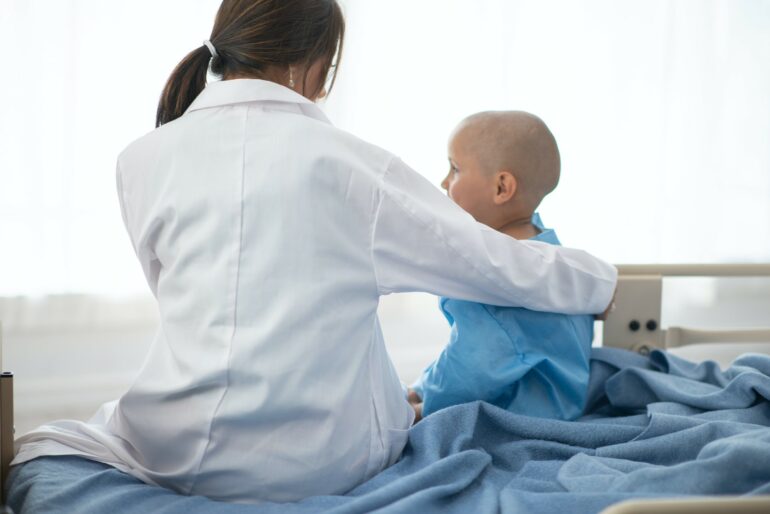Cancer arises when cells accumulate enough damage to change their normal behavior. The likelihood of accruing damage increases with age because the safeguards in your genetic code that ensure cells function for the greater good of the body weaken over time.
Why, then, do children who haven’t had sufficient time to accumulate damage develop cancer?
I am a doctoral student who is exploring the evolutionary origins of cancer. Viewed through an evolutionary lens, cancer develops from the breakdown of the cellular collaboration that initially enabled cells to come together and function as one organism.
Cells in children are still learning how to collaborate. Pediatric cancer develops when rogue cells that defy cooperation emerge and grow at the body’s expense.
Adult versus pediatric cancer
The cells in your body adhere to a set of instructions defined by their genetic makeup – a unique code that carries all the information that cells need to perform their specific function. When cells divide, the genetic code is copied and passed from one cell to another. Copying errors can occur in this process and contribute to the development of cancer.
In adults, cancer evolves through a gradual accrual of errors and damages in the genetic code. Although there are safeguards against uncontrolled cell growth and repair mechanisms to fix genetic errors, aging, exposure to environmental toxins and unhealthy lifestyle can weaken these protections and lead to the breakdown of tissues. The most common types of adult cancers, such as breast cancer and lung cancer, often result from such accumulated damage.
In children, whose tissues are still developing, there is a dual dynamic between growth and cancer prevention. On one hand, rapidly dividing cells are organizing themselves into tissues in an environment with limited immune surveillance – an ideal setting for cancer development. On the other hand, children have robust safeguards and tightly regulated mechanisms that act as counterforces against cancer and make it a rare occurrence.

Although pediatric cancer is rare, it is a leading cause of death for children under 15 in the U.S.
FatCamera/E+ via Getty Images
Children seldom accumulate errors in their genetic code, and pediatric cancer patients have a much lower incidence of genetic errors than adult cancer patients. However, nearly 10% of pediatric cancer cases in the U.S. are due to inherited genetic mutations. The most common heritable cancers arise from genetic errors that influence cell fate – that is, what a cell becomes – during the developmental stages before birth. Mistakes in embryonic cells accumulate in all subsequent cells after birth and can ultimately manifest as cancer.
Pediatric cancers can also spontaneously arise while children are growing. These are driven by genetic alterations distinct from those common in adults. Unlike in adults, where damage typically accumulates as small…



